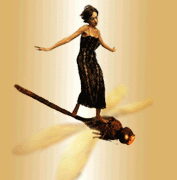Poema... na voz dum Poeta

COMO SE FAZ O POEMA
Para falarmos do meio de obter o poema,
a retórica não serve. Trata-se de uma coisa simples, que não
precisa de requintes nem de fórmulas. Apanha-se
uma flor, por exemplo, mas que não seja dessas flores que crescem
no meio do campo, nem das que se vendem nas lojas
ou nos mercados. É uma flor de sílabas, em que as
pétalas são as vogais, e o caule uma consoante. Põe-se
no jarro da estrofe, e deixa-se estar. Para que não morra,
basta um pedaço de primavera na água, que se vai
buscar à imaginação, quando está um dia de chuva,
ou se faz entrar pela janela, quando o ar fresco
da manhã enche o quarto de azul. Então,
a flor confunde-se com o poema, mas ainda não é
o poema. Para que ele nasça, a flor precisa
de encontrar cores mais naturais do que essas
que a natureza lhe deu. Podem ser as cores do teu
rosto – a sua brancura, quando o sol vem ter contigo,
ou o fundo dos teus olhos em que todas as cores
da vida se confundem, com o brilho da vida. Depois,
deito essas cores sobre a corola, e vejo-as descerem
para as folhas, como a seiva que corre pelos
veios invisíveis da alma. Posso, então, colher a flor,
e o que tenho na mão é este poema que
me deste.
© 2005, Nuno Júdice
From: Geometria variável
Publisher: Dom Quixote, Lisboa, 2005
~~~~~~~~~~
HOW TO MAKE A POEM
If we’re going to talk about how to make a poem,
rhetoric has nothing to do with it. It’s simpler than that, and doesn’t
require subtleties or formulas. Pick
a flower, for example, but not one of those flowers that grow
in the middle of fields, nor the ones they sell in stores,
or in the markets. A flower of syllables rather, in which the
petals are vowels, and the stem is the consonant. Place it
in the vase of the stanza, and let it be. So that it doesn’t die,
it’s enough to put a little Spring in the water, which,
on a rainy day, is fetched from the imagination,
or is pushed in through the window when the cool air
of morning fills the blue room. This is when
the flower begins to seem like a poem, but it’s still not
the poem. For it to really sprout, the flower needs
to find more natural colors than those
which nature gave it. They might be the colors
of your complexion – its whiteness, when the sun falls on you,
or the depths of your eyes in which all the colors
of life mix with the sheen of life. After that,
I pour these colors over the corolla, and watch them descend
to the leaves, like sap which runs through
the invisible veins of the soul. I can then pick the flower,
and what I have in my hand is this poem
that you gave me.
© Translation: 2007, Martin Earl
Publisher: Poetry International Festival, Rotterdam, 2007






Post a Comment